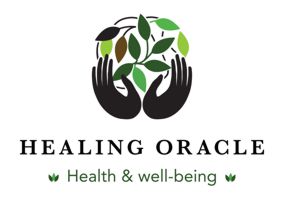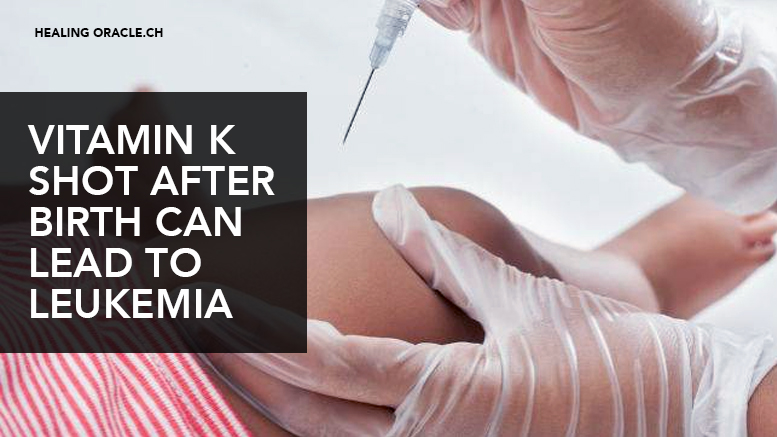This research is not new. Much of it dates back 30 years. So why as soon as a baby is born, do we cut the umbilical cord, cutting the vital supply of cord stem cells? And then we give the baby a shot of Vitamin K that is both unnecessary AND up to 20,000 times too strong, potentially damaging to the baby’s blood, liver, brain and more.
As more recent studies have highlighted the wonders of cord blood stem cells to not only the baby, but also to the medical industry in general and in many ways. Stem cells are a truly amazing source of regeneration for many ailments. So is that why they cut the cord so early, so the hospitals keep and profit from this rich source of naturally produced medicine? Is this just an elaborate stem cell racket we are unaware of?
It’s little wonder, why the baby donor industry is so big that New York state legislature voted to pass a bill that will now legalize abortion up to birth
The Vitamin K shot thickens the baby’s blood, reducing the stem cells effectiveness, as well as overloading their undeveloped liver.
One unnamed (to protect his innocence) paediatrician said:
“Here’s the kicker, in order for a baby to get this protective boost of stem cells, cord-cutting needs to be delayed and the blood needs to remain thin so stem cells can easily travel and perform their functions. Imagine that, baby has his/her own protective mechanism to prevent bleeding and repair organs…that wasn’t discovered until after we started routinely giving infants vitamin K injections.”
Why is it that we are told the baby needs this shot? Do we really think that babies are naturally born broken and deficient in vitamins and that human and state intervention was always needed?
“The chance of your child developing leukaemia from the Vitamin K
shot
is estimated to be about one in 500” (MIDIRS
Midwifery Digest, Vol 2 #3, September 1992)
Source: http://www.whale.to/vaccine/vitamin_k_shot.html
And why are stem cells so effective at treating Leukemia? The ironies are stacking up.
Vitamin K defficiancy
Vitamin K deficiency in babies is only in cases such as babies born to mothers who used drugs, or antibiotics during pregnancy, premature babies and babies born via caesarean. Also at risk are mothers who had maternity diets low in high vitamin K foods, or diets that were low in fat. But for everyone else, their babies will acquire sufficient levels of Vitamin K via the placenta & colostrum- typically within the first week after birth.
For a newborn, the Vitamin K shot- injected into a baby’s bloodstream/deep muscle tissue- is 20,000 times the needed dose. Beyond that insanity, the injection also contains a toxic preservative- Benzyl alcohol- that can be especially harmful to your baby’s delicate, young immune system.
Natural Vitamin Options for Newborns
But there are natural options for babies and mothers, should they need it:
“…Kale contains the optimal balance of Vitamins A, C, E & K – a powerhouse of antioxidants. In the case of your baby you can puree the vegetable enough to ensure it is palatable. If you have no alternative then choose a supplement that is proven to be 100% natural & organic; but again natural is superior.
Phytonutrients work as antioxidants to disarm free radicals before they can damage DNA and cell membranes. Recent research indicates that the phytonutrients in vegetables like kale work at a much deeper level, signalling our genes to increase production of enzymes involved in detoxification, the cleansing process by which the body eliminates harmful compounds.”
And not only can kale provide Vitamins but it’s also a rich source of organosulfur compounds, which have been shown to reduce the risk of many cancers, including one of the most deadly forms- colon cancer- because they block the growth of cancer cells and induce cancer cell death.
The vegetable, and some others in the cruciferous family:
- Kale, Collard Greens, Mustard Greens and Turnip Greens have deeply detoxifying properties, cleansing and detoxifying the liver, skin, digestive tract, lungs, and reproductive organs.
- They are high in calcium, vitamins C, A, E, (including Vitamin K), folate, B6 and zinc.
- “In addition to its deep cellular cleansing properties, broccoli is high in vitamins C, K and A, all powerful antioxidants for supporting the immune system and detoxifying the skin cells. It is also noted for its calcium content, which is in a more available form than calcium from dairy. Calcium must bind with vitamin C to be fully absorbable, and broccoli provides a high dose of each”, reports the article.
This is important for babies because the body doesn’t easily utilise synthetic vitamins and minerals and the vitamin K administered by hospitals is the synthetic, phytonadione.
But it’s also important because the Vitamin K shot has been linked to leukaemia, including acute lymphoblastic leukaemia (characterized by an increased number of white corpuscles in the blood) and accounts for about 85 percent of childhood leukaemia.
So, in case you’ve never gotten a copy of the Vitamin K Vaccine Package Insert, here it is:
AquaMEPHYTON injection is a yellow, sterile, aqueous colloidal solution of vitamin K1, with a pH of 5.0 to 7.0, available for injection by the intravenous, intramuscular, and subcutaneous routes.
Each millilitre contains: Phytonadione: 2 mg or 10 mg
Inactive
ingredients: Polyoxyethylated fatty acid derivative : 70 mg
Dextrose: 37.5 mg
Water for Injection, q.s: 1 mL
Added as preservative: Benzyl alcohol: 0.9%
More from the article:
“However, little is known about the toxic effects or levels of benzyl alcohol in neonates, especially in sick premature infants. Animal toxicity studies show an LD((50)) of approximately 33 ml/kg (300 mg/kg) in rats treated by rapid intravenous infusion with 0.9% benzyl alcohol, although 40 ml/kg (360 mg/kg) by slow intravenous infusion was tolerated without mortality.
Benzyl alcohol is normally oxidized rapidly to benzoic acid, conjugated with glycine in the liver, and excreted as hippuric acid. However, this metabolic pathway may not be well developed in premature infants. The benzyl alcohol may therefore have been metabolized to benzoic acid, which could not be conjugated by the immature liver but accumulated, causing metabolic acidosis.”
Currently, the best way to protect your baby from this shot is to sign the necessary paper-work to “opt out”, via your family doctor, BEFORE your baby is born. And during your time in the hospital, to further protect your child, someone should carry all necessary forms (several copies) at all times. Do not allow your baby to be taken away for any “health” inspections before you’ve handed over those documents.
Source: News Punch
Delay clamping
In the natural world mother remains attached to the baby via the umbilical cord for several hours. Letting the natural process of stem cell transfer take place. Yet mainstream medical intervention in the birthing process means that hospitals now want to clamp the cord as soon as possible, cut it, get the placenta out, fill the baby with toxic synthesised Vitamin K and get mother and baby out onto the ward as soon as possible. Next!
But the best thing would be to request a delay in clamping the umbilical cord for 2 to 4 hours, allowing the stem cells to fully transfer from the umbilical cord to baby, giving the newborn the full immunity cover it needs to thrive, survie and develop.
This is even more crucial in todays toxic world than ever before.
Bank the stem cells
If you cannot delay clamping due to the hospitals Big Brother insistence, or having an emergency C section, then bank your babies and families future health with these amazing cells. As we said cutting the umbilical cord so quickly and preventing this vital supply of cord blood cells in normal births (caesareans must be cut quickly for the sake of mum), is a really bad idea for your baby’s health. Cut the umbilical cord too early and you trap too much blood in the placenta, which can further complicate the placenta being birthed. So make sure you save the stem cells for your baby. Many hospitals do this for you now as a service.
According to WebMD:
There are so many things to think about when you have a child. One of them is the blood from your baby’s umbilical cord (which connects the baby to the mother while in the womb). It used to be thrown away at birth, but now, many parents store the blood for the future health of their child. Should you do it?
What Can It Be Used For?
The umbilical cord fluid is loaded with stem cells. They can treat cancer, blood diseases like anemia, and some immune system disorders, which disrupt your body’s ability to defend itself.
The fluid is easy to collect and has 10 times more stem cells than those collected from bone marrow.
Stem cells from cord blood rarely carry any infectious diseases and are half as likely to be rejected as adult stem cells.
How Do You Get It?
If you want the blood stored, after the birth, the doctor clamps the umbilical cord in two places, about 10 inches apart, and cuts the cord, separating mother from baby. Then she inserts a needle and collects at least 40 millilitres of blood from the cord. The blood is sealed in a bag and sent to a lab or cord blood bank for testing and storage. The process only takes a few minutes and is painless for mother and baby.
Source: WebMD
One
final question is what happens to the umbilical cord once it is cut?
How much money does the hospital make by keeping the cord and selling the stem
cells?
Love and Light
Healing Oracle
—
Love and Light
The Healing Oracle Team
Please join our growing numbers on MeWe: Healing Oracle
Also join us on Twitter | YouTube
Global Petition
Please sign our global petition against enforced vaccinations The intention of this petition is to present 5 million signatures to each President, Prime Minister, Health Minister and heads of state worldwide.
Vaccines are a global problem and need to be tackled on a global level.
If we stand as one, we have a chance of saving the children of the future.

